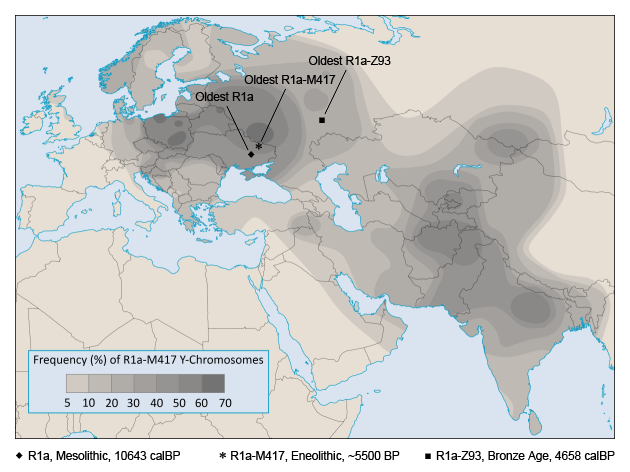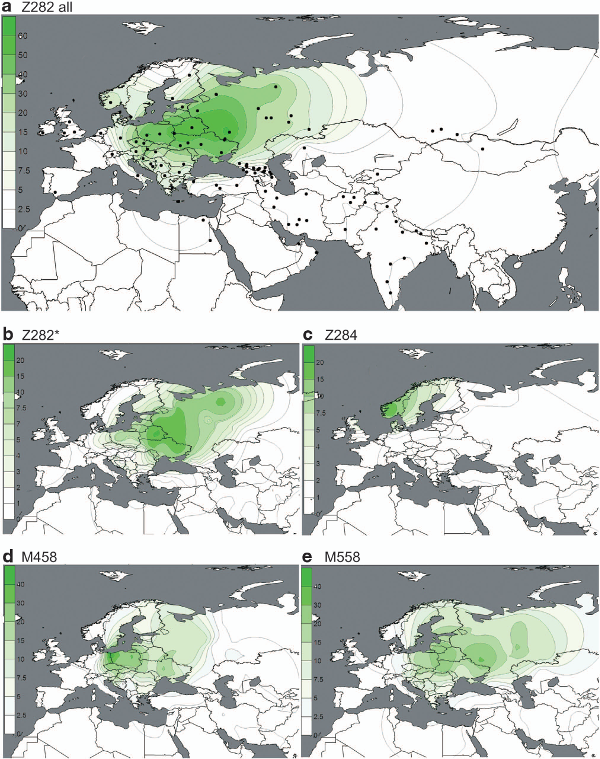No, but that ethnicity for sure didn't exist. Word Balt was started to use in 19th century for Letto-Lithuanians.
Even if we come to conlusion (somehow) that proto-Balto-Slavic language is equal term to proto-Baltic, than you need to understand some things. So, if this theory (hypothesis) is true than we have such situation; Baltic continuum of languages (not an ethnicity Balts). So this continuum of languages was made from 3 dialects: West Baltic (dead), East Baltic (Letto-Lithuanian) and Slavic (which can be call alternatively South Baltic dialect. But that what today means BALTS are exclusively Letto-Lithuanian dialect, and their dialect is defined as Baltic in 19th century. So when you see "Baltic" cultures, what do you mean? That Slavs come from Lithuanians and Latvians? That they spoke their dialect or what? It would be retarded claim. West Balts are one, East Balts are second and the Slavs (alternatively South Balts) are third thing. So your claim "There are no Slavs before 6th century" is nonsense. You are using (incorrect) term Baltic languages, for Balto-Slavic which would be more correct. Since Baltic languages are, i must say again modern Lithuanian and Latvian, who were always different dialects than the Slavic one. So this is the thing of terminology, and you are using the term "Balt", then i can use the term "North Slavs" for Balts, and it would not change anything. The sense is same.
I see you are proving your unknowledge. When Cyril and Methodius started to work, there was already many many dialects of Slavic languages. South Slavs already had their dialect, West Slavs already had their dialects, and East Slavs already had their dialects (which was quite similar to the West Slavic one). You are delusional if you are thinking that Cyril and Methodious made half Europe to speak Slavic. It's funny.
Hahahah. It's incorrect and supported just by few linguists. Main modern statement is that Slavic is Southern Baltic dialect (dialect of Baltic continuum not of the ethnicity Balts - modern Letto-Lithuanians).
For example, you can read it from Frederik Kortlandt, from Toporov, from Ivanov etc...
Part of Kortlandt's work:
There is little or no evidence for a period of common West and East Balticinnovations after the period of common Balto-Slavic developments before theseparation of Slavic from the Baltic languages. The terms “Proto-Baltic” and “ProtoBalto-Slavic”refer to the same thing, and Slavic may alternatively be called “SouthBaltic”. The opposite view is taken by Miguel Villanueva Svensson (2014) and EugenHill (2016). Here I specify the differences which underlie the disagreement.
Part of Villanueva's work (who thiks otherwise):
According to Villanueva (2014: 173), the “most serious problem for Baltic unityis the apparent existence of non-trivial isoglosses between East Baltic and Slavic (e.g.thematic genitive singular, “nine”, ”third”, etc.)”. He opposes gen.sg. Lith. vil̃ko andOCS vlъka < *-ãd to OPr. deiwas (2014: 163). In fact, the ending Lith. -o, Slavic -arepresents *-ōd and can be identified with the Latin ablative ending -ōd, not **-ād, forwhich there is no evidence whatever. The Lithuanian reflex is -o because the endingwas unstressed in all accent classes (cf. Kortlandt 2009: 6, 46). Prussian added ananalogical -s to the Balto-Slavic ending in accordance with the other flexion types, allof which had a genitive in -s (cf. Vaillant 1958: 30, Kortlandt 2009: 192). The originalending was preserved in the Old Prussian proverb Deues does dantes, Deues doesgeitka ‘God give teeth, God give bread’ (cf. Sjöberg 1969) and in the Basle epigramnykoyte pēnega doyte ‘you do not want to give money’, where an emendation to -an or-as is unsatisfactory (cf. Kortlandt 2009: 215f.). There is no ancient isogloss betweenEast Baltic and Slavic here.The words for ‘nine’ and ‘third’ indeed support the view that Balto-Slavic splitinto three identifiable branches, with East Baltic as an intermediate dialect betweenWest Baltic and Slavic. OPr. newīnts ‘ninth’ shows that the substitution of de- for neinLith. deviñtas and OCS devętъ belongs to the dialectal Balto-Slavic period. Thesame holds for the subsequent development of *eu to *iou before consonants in EastBaltic and Slavic (cf. Kortlandt 2009: 45f., Derksen 2010). Similarly, OPr. tīrts ‘third’,acc. tīrtian, tirtien, Vedic tṛtī́yas for earlier *triyo-, is archaic in comparison with Lith.trẽčias and OCS tretii, which have tre- from *treies ‘three’. Another commondevelopment of East Baltic and Slavic not shared by West Baltic is the elimination of-s- in the pronominal dat.sg. and loc.sg. forms Lith. tãmui, tamè, tái, tojè, OCS tomu,tomь, toi, OPr. stesmu, stessiei, Vedic tásmai, tásmin, tásyai, tásyām
Slavic language is from Baltic continuum, not Baltic language (modern Letto-Lithuanian family).
Who proclaim it as Baltic? You, or some relevant archeologists? Names? Quotations?
Those are official informations about Milograd culture:
"The Milograd culture (also spelled Mylohrad, also known as Pidhirtsi culture on Ukrainian territory) is an archaeological culture, lasting from about the 7th century BC to the 1st century AD. Geographically, it corresponds to present day southern Belarus and northern Ukraine, in the area of the confluence of the Dnieper and the Pripyat, north of Kiev. Their ethnic origin is uncertain."
Link here: https://en.wikipedia.org/wiki/Milograd_culture
I came here and opened a thread searching for someone who will post just proven things. You are posting your personal assumptions, and i respect this, but i don't respect that you are representing it as official and real. While nobody proved it yet. Do you see that even Balts (Letto-Lithuanians) on this forum don't have such statements as you have?
I am curious about Southern baltic language term use in your argument, but I explicitly mentioned, that recent historians called Kievan Rus(which contains southern areal of Baltic, as well) as Eatern Baltic state, because Lithuanian is considered Eastern Baltic.
Besides, I explained about not my research actually, but ideas I've picked up, how prussians were linked to slavs, whic does not make slavic as southern baltic, but creole of western baltic, and it still does not make any paralel existence of slavic language.
No, Im using correct term of Baltic languages, which explicitly mean - anything that used Baltic and continued to use it till now or until extinction. We have a huge misunderstansding, because I suppose, that all of these theories about baltic-slavic relations are outdated and are not supported by historical and linguistical evidence(following picture is 100 years old and you are trying to shuffle slavic as one of those):

And I am with Влади́мир Никола́евич Топоро́в, who says, that slavic branched off from baltic and proto-baltic-slavic theory is not supporting this idea of a very authoritative baltic linguist, but insist on using outdated version... so I have a problem with wiki interpretation, which I would not use, without considering a very notable update.
Also another thing. Western baltic does not exist - there are at least couple of groups of languages, that are related to each other and who for the sake of simplicity are called as western. Yes, I am aware, that wiki says otherwise(again), but wiki is not authority in these matters at all.
I need to understand your measurement of half of Europe, but thanks to church slavonic, Rus was made into slavic speaking region, where slavic population was in tiny minority among more numerous finnish and baltic tribes. With church slavonic all of rural greeks became slavic speaking just as well as nonslavic people of Balkans, who were orthodox christians. Just like slavic and baltic people of eastern germany were assimilated into german, because in those ages the only identification of people was religion branch and what language used church, that was the language they used, or are you implying that common folks influenced language of church liturgy?
"It's incorrect and supported just by few linguists." - What about this: "In linguistics nothing can be solved by voting, but by research."
About Villanueva:
Oh, we are dwelling into something, that what I've noted, that eastern slavs were assimilated balts. Not all of them were eastern balts, though - some of them were even more eastern, than eastern balts and some, like galindians were colonists from west of eastern balts. Also, I would need to understand to which specific time period Villanueva is refering to. It should be noted, that eastern slavs were hit by church slavonic very heavily - I must wonder, if that author is even aware of what could happen as a result of mix of eastern baltic(all that is used for church in eastern slavic comes from church slavonic) and church slavonic in eastern slavic languages? Also, if you did not understand what I wrote there, that actually contradicts anything you are mentioning as unified slavic language and proto-language, because most of that is influences of preslavic eastern baltic substratum on eastern slavic, which are not present in other slavic languages, but we are still talking proto-slavic, as slavic, that originated from one slavic group, right? Btw, I've not considered option, that slavic might be evolved as paralel multiple slavic languages, whic Villanueva argument seems like actually makes as a case.
Well, I do not see any problems regarding Milograd culture. Wiki has used unprecise terminology, which is open to strange interpretations, but it is Baltic with unknown ethnic origin - as we do not know name for ethnicity of Milograd culture. Unless we are ready to accept their identification as Neuri or baltic name would be Nauri, which comes from Narew name of Bug river tributary.
https://en.wikipedia.org/wiki/Neuri
http://www.suduva.com/virdainas/galindai.htm
I still don't see how you can nitpick Milograd culture, just by using as a base, what is written in wiki, without consulting actual sources, as more recent sources still classifies younger cultures as baltic, where also Milograd culture is regarded as baltic.
What is the point of mentioning other people and by baltic ethnicity? What's the use for this kind of argument? Only thing what I can come up, is that they are not as many and most probably they have nothing to say, where I have




